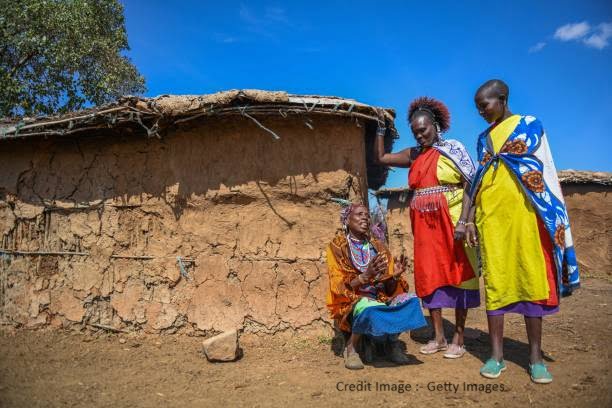In the realm of anthropology, it’s a well-established pattern that biological diversity flourishes where species or families originated. This principle is vividly exemplified by the richness of human diversity in regions believed to be the cradle of our species. This article takes you on an exploration of the remarkable human diversity found in the Kalahari and Namib Deserts of southeastern Africa.
The Kalahari and Namib Deserts: A Unique Landscape
Understanding the Terrain
The Kalahari and Namib Deserts are iconic landscapes in southern Africa. The Namib Desert, stretching along the coasts of Namibia, Angola, and South Africa, is a place of stark beauty and incredible challenges.

Overcoming Challenges
Studying human diversity in these deserts posed significant challenges, including historical conflicts and disruptions. However, as stability returned to the region, researchers embarked on a journey to unravel the mysteries of ancient human prehistory.
Rediscovering Lost Groups and Languages
The Fascinating Kwepe and Kwadi Language
One of the most remarkable discoveries was the revival of groups believed to have vanished more than half a century ago. Among these groups is the Kwepe, known for their unique language, Kwadi, characterized by clicking sounds. The disappearance of Kwadi was once considered a sign of the end of their isolation from neighboring populations.
Linguistic Revival
Leading this linguistic revival project, Dr. Ann-Maria Fehn of the Centro de Investigação em Biodiversidade e Recursos Genéticos located two individuals near the Kuroka River who retained significant knowledge of the Kwadi language. This revival of Kwadi not only preserves a unique linguistic heritage but also provides valuable insights into the history of the region.
Uniting Genetics and Linguistics
Investigating Ancestral Relationships
Researchers combined genetic and linguistic analyses to uncover the intricate relationships between the inhabitants of the Angolan Namib and northern Namibia. Notably, they found the most substantial genetic differences among populations with distinct lifestyles, such as farmers, herders, and traditional hunter-gatherers.
Ancient Ancestral Lineages
The study revealed that the Khoe-Kwadi speakers, including those who once spoke Kwadi, share ancestry with more extensively studied Kalahari populations. This ancestral lineage is ancient, possibly dating back hundreds of thousands of years.
Tracing Human Migrations
Insights into Migration Patterns
The research allowed scientists to reconstruct the migration patterns of the region’s populations. The Khoe-Kwadi speakers dispersed across the area approximately 2,000 years ago, possibly originating from what is now Tanzania. This migration occurred relatively late compared to the first inhabitants, who spoke Khoe languages and may have resided in the area for hundreds of thousands of years. Subsequently, Bantu speakers arrived, originating from West and Central Africa, 200-500 years later.
Filling in the Missing Piece
The populations that once spoke Kwadi, before adopting Bantu languages in recent decades, represent a crucial piece in humanity’s complex puzzle. Their genetic distinctiveness and historical narrative add depth to our understanding of human origins.
Conclusion
The Kalahari and Namib Deserts of southeastern Africa are not just arid landscapes; they are living testaments to the rich tapestry of human diversity and history. Through a blend of linguistic revival and genetic exploration, researchers have shed light on the remarkable journeys and origins of the inhabitants of this region. This study reaffirms the notion that understanding our past holds the key to appreciating the intricate mosaic of human diversity.
Read More
The Black Mage of Final Fantasy 14 – A Finger-Lickin’ Crossover
Transform Your Home into a Smart Haven
The Tasmanian Tiger: A Remarkable Scientific Endeavor
John D. “Danny” Olivas: A Remarkable Journey from El Paso to Space
A Guide to Pre-Ordering Apple Products in the United States
Google’s Threat Analysis Group: North Korean State Hackers Target Security Researchers
Synthetic Human Embryos: A Revolution in Scientific Understanding
Unveiling the Rarity and Beauty of Pink Diamonds: The Lulo Rose Phenomenon
Personalized 4D Printed Implants Redefining Breast Cancer Treatment
Decoding the Enigma of Earth’s Oxygen Surge: Unveiling Volcanic Sulfur Dioxide’s Role
GOOGLE DEEPMIND: Google’s Stealthy AI Weapon to Spot Deep fake Images!
Pakistani Doctor Sentenced to 18 Years in the US for Assisting ISIS
Exploring the Marvels of Coral Reefs: Unraveling the Darwin Paradox
Historic Milestone Achieved: Chandrayaan-3 Successfully Lands on Lunar Surface
FAQs: Unveiling Human Diversity
Why are the Kalahari and Namib Deserts significant in anthropology?
These deserts are significant because they are believed to be regions where early human populations thrived, making them valuable for studying human origins and diversity.
What is a click language like Kwadi?
A click language is a type of language that includes clicking sounds as part of its phonetic inventory. Kwadi, once spoken in the region, was one such click language.
What insights did genetic analysis provide in this study?
Genetic analysis helped researchers trace ancestral relationships between different populations, revealing migration patterns and genetic distinctions.
Why is the revival of Kwadi language important?
The revival of Kwadi language is important as it preserves cultural heritage and provides valuable linguistic insights into the history of the region.
How does this study contribute to our understanding of human diversity?
This study enriches our understanding of human diversity by uncovering previously unknown populations and their genetic distinctiveness, offering a glimpse into the complexity of human origins.


